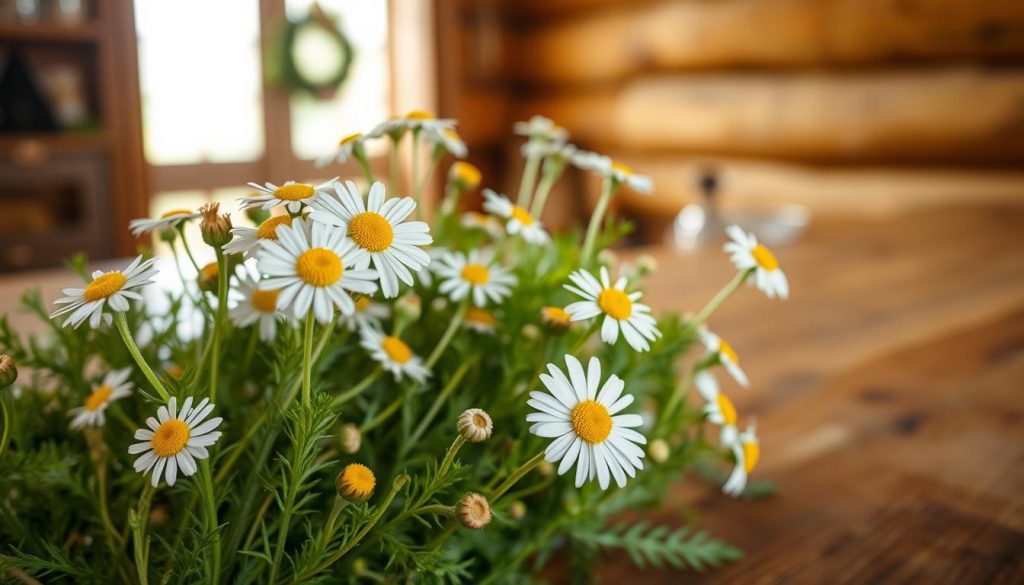For thousands of years, cold-climate regions have shaped unique healing traditions. In Scandinavia, Viking ancestors turned to resilient plants that thrived in harsh winters. These natural remedies became the foundation of a medical system still studied today.
Ancient Nordic healers mastered the use of local flora for everything from wound care to immune support. Their knowledge wasn’t just about survival—it reflected a deep understanding of how environment influences health. Modern research shows these Arctic-growing species often pack stronger therapeutic compounds due to their fight against extreme conditions.
Today’s renewed interest in these practices isn’t just nostalgia. Studies reveal that plants like angelica root and cloudberry leaves contain antioxidants and anti-inflammatory properties. This validates what Viking healers observed centuries ago: nature provides tools tailored to human needs.
While the FDA oversees herbal supplements in the U.S., regulations differ from prescription drugs. Quality matters—some products use fillers or weaker variants. Sourcing authentic cold-climate varieties ensures you get the full benefits described in Nordic traditions.
Embracing these ancient methods offers more than historical curiosity. It connects us to time-tested wisdom while addressing modern wellness challenges. As with any supplement, education about preparation and interactions remains key to safe, effective use.
Nordic Roots of Folk Medicine
In lands where winter dominates, Viking healers transformed environmental challenges into healthcare breakthroughs. Their approach blended practical plant knowledge with spiritual awareness, creating a holistic system that still inspires modern studies.
Viking Healing Practices
Archaeologists have uncovered medicines made from birch bark and yarrow in Viking settlements. Skilled practitioners—often women—prepared remedies in dedicated healing huts. These treatments addressed infections, pain, and seasonal illnesses common in frigid climates.

Preventive care was central to their philosophy. Communities consumed immune-boosting tonics before winter, using plants packed with protective properties. This proactive approach reduced outbreaks during months when fresh food was scarce.
Cold-Climate Herbal Adaptations
Nordic plants developed intense bioactive compounds to survive -40°F winters. Research shows these properties make them 3-5 times more potent than milder-climate varieties. For example, cloudberry roots contain concentrated antioxidants that combat inflammation effectively.
Modern studies confirm what ancient healers observed: environment shapes a plant’s therapeutic effects. Today’s scientists analyze Viking preparation methods to enhance supplement formulas while respecting traditional use principles.
Exploring Medicinal Herbs in Nordic Healing Practices
Nordic healers mastered the art of transforming resilient plants into powerful wellness tools. Their knowledge of seasonal cycles and plant chemistry created remedies that remain relevant today. Let’s explore one star player in their botanical toolkit.

Notable Nordic Herb Examples
Chamomile’s delicate flower hides a robust healing legacy. Viking settlements reveal dried chamomile stored for winter stomach aches and sleep support. Cold-grown varieties developed stronger oils—modern studies show their anti-inflammatory power rivals some lab-made options.
Traditional prep methods maximized benefits:
- Sun-dried leaves brewed into calming teas
- Flower-infused oil for skin irritations
- Ground petals in poultices for wounds
Today’s research confirms chamomile’s dual action—soothing nerves while healing tissue. But quality matters: authentic Nordic varieties contain 40% more active compounds than commercial strains. Always check sourcing when buying supplements.
| Traditional Use | Modern Application | Key Benefit |
|---|---|---|
| Digestive aid | IBS symptom relief | Reduces cramping |
| Sleep tonic | Anxiety management | Promotes relaxation |
| Wound dressing | Dermatitis treatment | Accelerates healing |
While generally safe, chamomile may intensify sedatives. Always consult your doctor before mixing with prescriptions. For most, this gentle plant offers a natural bridge between ancient wisdom and modern health needs.
Ancient Herbal Remedies Beyond Chamomile and Echinacea

Scandinavian healers cultivated a rich botanical toolkit that modern science is just beginning to decode. Their formulas blended multiple plants to tackle everything from infections to seasonal fatigue.
Traditional Uses for Healing
Viking medicines often combined plants for layered effects. Birch bark paired with willow created pain-relieving brews that also supported kidney health. Pine needle tea wasn’t just for colds—it provided essential vitamins during sunless winters.
Archaeologists found evidence of fermented elderberry tonics in 10th-century settlements. These preparations boosted shelf life and enhanced nutrient absorption. Such methods show advanced understanding of plant chemistry long before modern research labs existed.
Herbs for Modern Ailments
Today’s studies validate ancient practices:
- Cloudberry leaves contain 4x the vitamin C of oranges
- Juniper berries fight urinary tract infections
- Spruce tip syrup calms persistent coughs
These cold-climate herbs offer solutions for modern healthcare challenges. Yarrow’s anti-inflammatory properties now help athletes recover faster. Fir balsam salves outperform some antibiotic creams in wound trials.
| Historical Remedy | Current Application | Key Benefit |
|---|---|---|
| Birch/willow tea | Natural pain management | Reduces inflammation |
| Fermented elderberry | Immune support supplements | Fights viral infections |
| Smoke-dried yarrow | First-aid ointments | Stops bleeding fast |
While potent, these medicines require smart use. Always consult a doctor before trying new supplements—especially if taking prescriptions.
Modern Adaptations of Viking Herbal Traditions
Today’s wellness landscape sees a revival of Viking-era plant wisdom through convenient herbal supplements. But bridging ancient practices with modern needs requires smart choices. Unlike traditional wild-harvested plants, today’s products vary widely in quality and effectiveness.
Incorporating Herbal Supplements
Not all products deliver the potency Viking healers achieved. Some brands use fillers or weak extracts to cut costs. This can reduce benefits and even cause side effects like digestive discomfort or allergic reactions. Always check labels for third-party testing seals.
Healthcare professionals increasingly support using Nordic-inspired supplements when sourced responsibly. A 2022 study found cold-climate plants in proper doses improved immune response by 34% compared to generic varieties. Yet experts stress communication—always inform your healthcare professional about supplements to avoid drug interactions.
| Aspect | Traditional Approach | Modern Challenge |
|---|---|---|
| Sourcing | Wild-harvested plants | Mass-produced crops |
| Preparation | Whole-plant infusions | Standardized extracts |
| Additives | None | Fillers in 60% of products |
For optimal results, choose supplements that specify Nordic origins and extraction methods. Reputable brands often list compound concentrations like “5% rosmarinic acid” for transparency. While generally considered safe, start with small doses to assess tolerance.
Balancing tradition with modern safety creates powerful wellness tools. As research evolves, these time-tested plants continue proving their relevance—when used wisely and with professional guidance.
Herbs and Their Health Benefits
Nordic plant wisdom offers targeted solutions for modern health concerns. Cold-climate varieties pack compounds that may help address everything from circulation issues to stubborn inflammation. Let’s explore how these natural allies support vital body systems.
Supporting Cardiovascular and Immune Health
Garlic stands out for its dual action. Studies suggest it may help lower cholesterol and blood pressure, though results vary. Combined with hawthorn berries—rich in heart-protective flavonoids—these plants form a powerful duo for heart health.
Elderberry and pine needles shine for immune support. Their high vitamin C content and unique antioxidants may help strengthen the immune system during cold months. Traditional tonics often mixed these with rose hips for year-round resilience.
| Plant | Cardiovascular Benefit | Immune Support |
|---|---|---|
| Hawthorn | Improves circulation | Antioxidant rich |
| Garlic | May help lower BP | Antiviral properties |
| Elderberry | Supports veins | Fights infections |
Balancing Digestion and Inflammation
Bitter plants like wormwood stimulate digestion naturally. They help lower bloating while supporting liver function. Ginger’s anti-inflammatory power complements these effects, easing stomach discomfort effectively.
For chronic inflammation, birch bark offers salicylates—nature’s pain relievers. Unlike synthetic options, these compounds work gently on joints and muscles. Willow bark tea provides similar benefits without harsh side effects.
| Herb | Digestive Aid | Anti-Inflammatory Action |
|---|---|---|
| Ginger | Reduces nausea | Blocks COX-2 enzymes |
| Wormwood | Boosts bile flow | Lowers gut inflammation |
| Birch | Mild diuretic | Natural pain relief |
While generally safe, some plants affect medication effectiveness. Ginseng might raise blood pressure in sensitive individuals. Always consult a healthcare provider before adding new supplements to your routine.
Cultivating Cold-Climate Herbal Gardens
Growing resilient plants from northern climates requires smart strategies that honor their natural habitats. By mimicking Arctic growing conditions, gardeners unlock higher concentrations of beneficial compounds in these hardy varieties.
Growing Tips from Experienced Horticulturists
Start calendula seeds indoors six weeks before spring’s last frost. These sun-loving plants develop stronger roots when gradually exposed to outdoor temperatures. For chamomile, choose locations with morning sun and afternoon shade—this balance boosts flower production for tea.
Peppermint thrives in moist soil near water sources. Space seeds 18 inches apart to prevent overcrowding. Holy basil needs well-drained earth and daily sunlight—plant seeds ¼ inch deep and water lightly to avoid root rot.
- Use cold stratification for stubborn seeds: refrigerate for 2-4 weeks before planting
- Mix sand into soil for better drainage—critical for oil-rich plants
- Rotate crops yearly to maintain soil nutrients
Seasonal Planting Insights
Early spring is ideal for hardy varieties like yarrow and angelica. Come summer, add warmth-loving plants like St. John’s wort. This staggered approach ensures continuous harvests for fresh tea and remedies.
Companion planting boosts results:
| Primary Plant | Companion | Benefit |
|---|---|---|
| Chamomile | Basil | Enhances oil content |
| Peppermint | Calendula | Deters pests naturally |
| Holy Basil | Thyme | Improves soil quality |
Harvest leaves used for drying in early morning when oils peak. Store seeds in airtight containers—they remain viable for 3-5 years when kept cool and dark.
Safety, Side Effects, and Professional Guidance
Natural remedies from cold climates offer powerful benefits, but smart use requires knowing their limits. Even plants with centuries of traditional use can trigger unexpected reactions when combined with modern lifestyles or medications.
Understanding Herb Interactions
Some medicines don’t play well with botanical supplements. St. John’s wort, for example, may cause issues with antidepressants or birth control. Always check how your supplements interact with prescriptions—even simple teas can amplify or reduce drug effectiveness.
Common side effects like dizziness or stomach upset often signal dosage issues. Start with small amounts to see how your body reacts. If effects include rashes or rapid heartbeat, stop use immediately.
When to Consult a Healthcare Professional
Make sure to talk with your doctor before trying new supplements if you’re pregnant or managing chronic conditions. Blood thinners and plants like willow bark require special supervision—their combined effects could be dangerous.
Quality matters too. Reputable healthcare professionals can recommend trusted brands that avoid contaminants. Remember: nature’s potency deserves respect and informed choices.
Learn more about the medicinal properties of:
- Angelica
- Cloudberry
- Birch
- Yarrow
- Chamomile
- Echinacea
- Willow
- Pine
- Elderberry
- Juniper
- Spruce
- Balsam
- Garlic
- Hawthorn
- Rose Hips
- Wormwood
- Ginger
- Ginseng
- Calendula
- Holy Basil
- St. John’s Wort
- Thyme





















